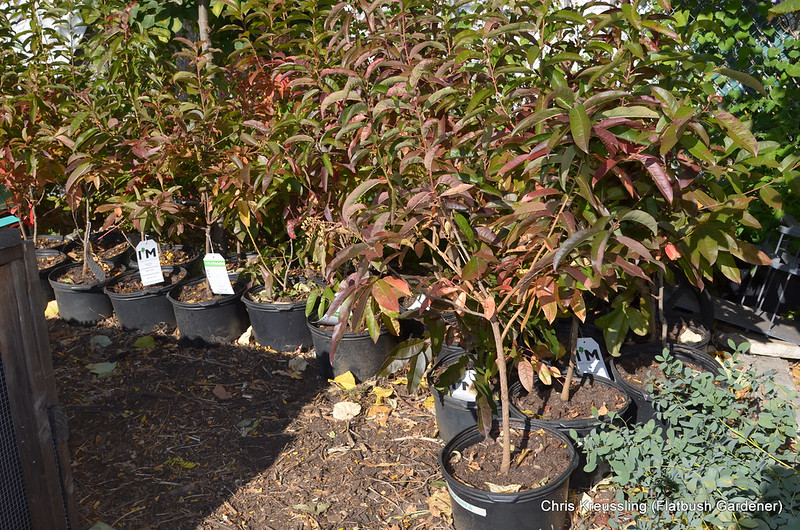2010.08.30: Added information about BBG's 2010 Signature Plants source,
Blossom Nursery.
2010.02.08: More on the
Staten Island Pawpaws.
Asimina triloba, Common Pawpaw, is a native fruit true in the
Annonaceae, the Custard-Apple Family. The Pawpaw fruit can be up to 12cm/5" long, the largest fruit native to the U.S. Its taste is likened to a combination of banana and mango, or papaya. Two plants are needed for pollination.
Photo: Scott Bauer, USDA.
 Pawpaw
Pawpaw is the common name for plants in the genus
Asimina, with several species native to eastern North America.
A. triloba has the most northern range by far of the genus, reaching into New York, and even southern Ontario, and west to Nebraska. This wide range is attributed to cultivation and distribution by Native American people, including the Cherokee and Iroquois.
Asimina triloba Distribution Map. Credit: eFloras, Flora of North America

Locally, its status is threatened in New York, and endangered in New Jersey. It's hard to tell from the NY map, but it has been found on Staten Island, New York City. More on this below.
New York counties distribution map. Credit: USDA PLANTS

Pawpaw grows as a large shrub or small understory tree, maturing to about 25' tall in 20 years, rarely to 30-40'. Pawpaw is prone to spreading by suckering, sending up new stems and trunks from the roots, to form a thicket. This tendency decreases as the plant ages, so removing the suckers while the plant is young will promote a single trunk.

